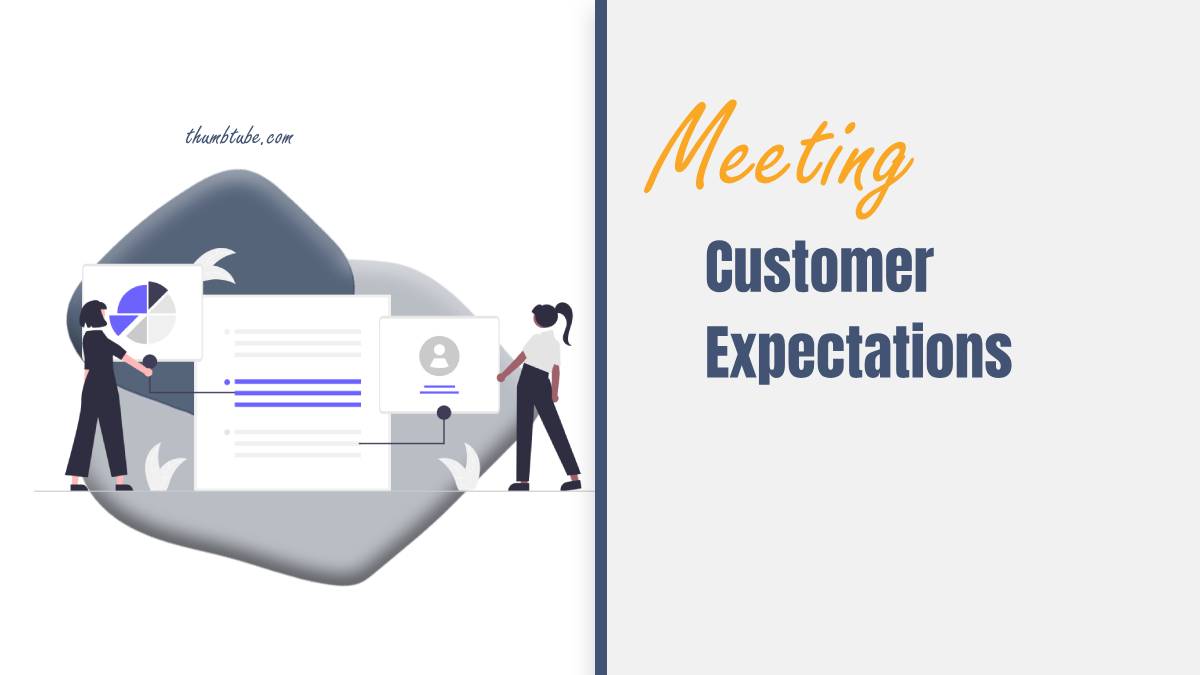In the competitive landscape of today’s business world, meeting customer expectations has become paramount for success. Customers have become more discerning, expecting not only quality products or services but also a seamless and satisfying experience. This shift places a greater emphasis on businesses to not only meet but exceed customer expectations. In this article, we will delve into the significance of meeting customer expectations, explore strategies to surpass them and offer management tips to ensure sustainable customer satisfaction.

The Importance of Meeting Customer Expectations
1. Enhanced Customer Loyalty
Meeting and exceeding customer expectations builds trust and fosters a sense of loyalty. Satisfied customers are more likely to return, leading to repeat business and long-term relationships.
2. Positive Brand Image
Consistently meeting or surpassing customer expectations cultivates a positive brand image. This positive perception can lead to word-of-mouth referrals and organic growth.
3. Competitive Advantage
In a crowded market, businesses that consistently meet or exceed customer expectations stand out. This differentiation can be a powerful tool for gaining a competitive edge.
4. Reduced Churn Rate
When customers feel their needs are being met, they are less likely to seek out alternatives. This leads to a lower churn rate, reducing the costs associated with acquiring new customers.
5. Increased Profitability
Satisfied customers are more likely to make additional purchases, upgrade services, or refer others. This directly impacts the bottom line, contributing to increased revenue and profitability.
Strategies to Exceed Customer Expectations
1. Understand Customer Needs
Conduct market research and gather feedback to gain a deep understanding of what your customers value and expect. Use this information to tailor your products or services.
2. Set Realistic Expectations
Be transparent about what customers can expect. Overpromising and underdelivering can lead to disappointment while setting clear, achievable expectations builds trust.
3. Provide Outstanding Customer Service
A responsive and helpful customer service team can make a significant difference. Train your staff to be empathetic, knowledgeable, and proactive in resolving issues.
4. Personalize the Experience
Utilize customer data to offer personalized recommendations, promotions, or content. This demonstrates that you value and understand their individual preferences.
5. Continuously Improve Quality
Consistently strive for excellence in your products or services. Seek customer feedback and use it to make improvements and refinements.
6. Anticipate Future Needs
Stay ahead of trends and changes in your industry to anticipate what your customers may need in the future. Being proactive in meeting those needs demonstrates foresight and commitment.

Management Tips for Meeting Customer Expectations
1. Empower Your Team
Provide your employees with the tools, training, and authority they need to meet customer expectations. Encourage a customer-centric culture within your organization.
2. Monitor Feedback and Metrics
Regularly collect and analyze customer feedback. Utilize metrics like Net Promoter Score (NPS) and Customer Satisfaction Score (CSAT) to gauge performance and identify areas for improvement.
3. Celebrate Successes
Recognize and celebrate achievements in meeting or exceeding customer expectations. This can motivate your team and reinforce the importance of customer satisfaction.
4. Address Issues Promptly
When issues arise, address them promptly and professionally. Swift resolution demonstrates your commitment to customer satisfaction.
5. Foster a Culture of Continuous Improvement
Encourage innovation and the pursuit of excellence within your organization. Regularly review and refine processes to ensure they align with evolving customer expectations.
6. Stay Agile and Adaptable
Markets and customer preferences are constantly changing. Be agile in your approach and willing to adapt to meet shifting expectations.
Meeting customer expectations is not only a good business practice; it’s a crucial factor in achieving sustainable growth and success. By understanding the importance of customer satisfaction, implementing strategies to exceed expectations, and employing effective management techniques, businesses can cultivate strong customer relationships that drive loyalty, advocacy, and profitability. Remember, in the end, it’s the satisfied customer who becomes the most potent advocate for your brand.
